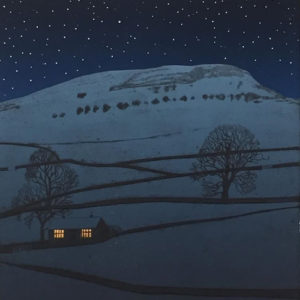We are very pleased to be showing a great selection of work currently at the Oxmarket in Chichester! This exhibition showcases local art workshops including
Artworks Studio, Jo Dowers and Handprinted. We’ve gathered together works by our staff, guest workshop tutors and studio users to showcase some of
the techniques that take place in the Handprinted studio! This is a fantastic opportunity to take a look at the possibilities available in the printmaking
world. Scroll down to see some of the work included in the exhibition and click here to see all of the amazing workshops coming up at Handprinted.
This exhibition takes place until Sunday 3rd June in the Oxmarket gallery in Chichester.

The exhibition was set up on bank holiday Monday by amazing Oxmarket team. A lot of work goes in to deciding how to hang the work to show it at its best
as part of a coherent show.






Take a look at the work showcased as part of the Handprinted section of the exhibition:

Letterpress print by one of our staff members Tom Boulton. Tom will be teaching a letterpress workshop in January 2019!

Transfer prints by Barbara Lammas, one of our regular studio
users.

Collagraph (top) by Hester Cox, one of our visiting tutors whose next available workshop is in June 2019.
Woodcut (middle) by Sue England, a regular studio user.
Collagraph with gum arabic transfer (bottom) by Sue Brown, one of our visiting tutors. Sue will be teaching a sketchbook with gum arabic workshop and a silk aquatint workshop with us in 2019.

Screen prints by Anna Vartiainen, a regular studio user.

Screen prints by Sue England, a regular studio user.

Screen print by Shirley Scott, our very own from Handprinted. Shirley will be teaching our next Six Weeks of Screen Printing Workshop in September 2018.

Linocut by Ian Phillips, one of our visiting tutors. Ian’s next available workshop with us is in September 2018.

Linocut on monoprint and reduction linocut by Phil King, a regular studio user.

Screen print by Rob Luckins, one of our visiting tutors who will be teaching screen printing in March 2019.

Four screen prints and an etching by Holly Newnham, who you may know from Handprinted already. Holly teaches lots of the Fab Friday workshops as well as other courses such as three weeks of batik!

Two screen prints by Martin Jones, a regular studio user.

Linocut (top) by Jeremy Williams who you may have seen working hard in the shop!
Linocut (bottom) by Phil King, a regular studio user.

Batik by Marya Draper, a regular studio user.

Drypoint Etchings and a Collagraph (bottom) by Tricia Johnson, a regular studio user.

Collagraph (left) by Debbie Moran, a regular studio user.
Linocut (right) by Shirley Scott.

Screen print (top right) by Shirley Scott.
Screen print (middle right) by Shirley Scott.
Monoprint screen print (bottom right) by Nicole Phillips, a studio user.

Japanese Woodblock by Laura Boswell. Laura will be teaching this technique again in October 2018.
Pop in to the Oxmarket Gallery in Chichester from now until Sunday
3rd June 2018 to view all of this work as well as lots more artworks using various techniques.
All of our workshops can found here.






































.JPG)